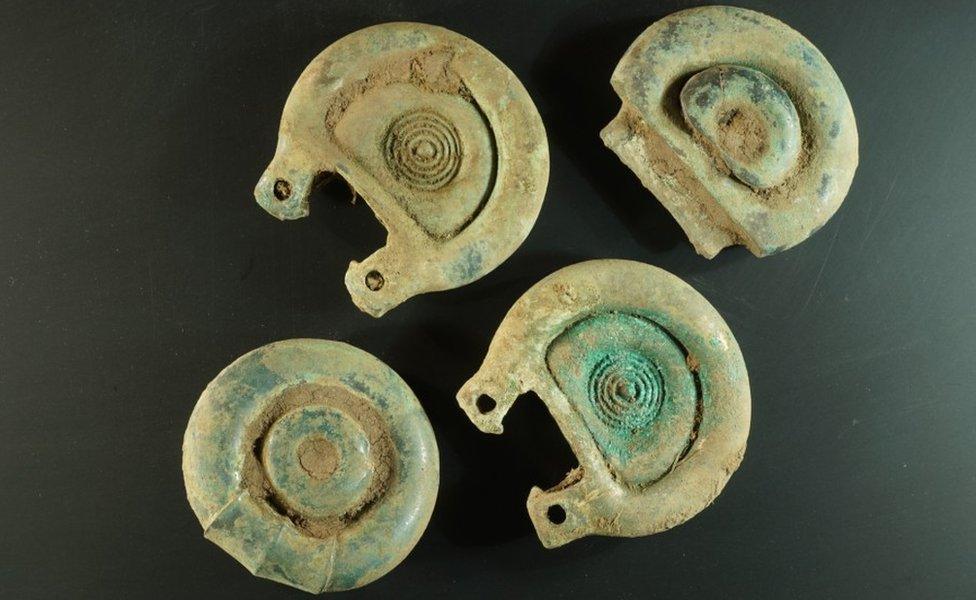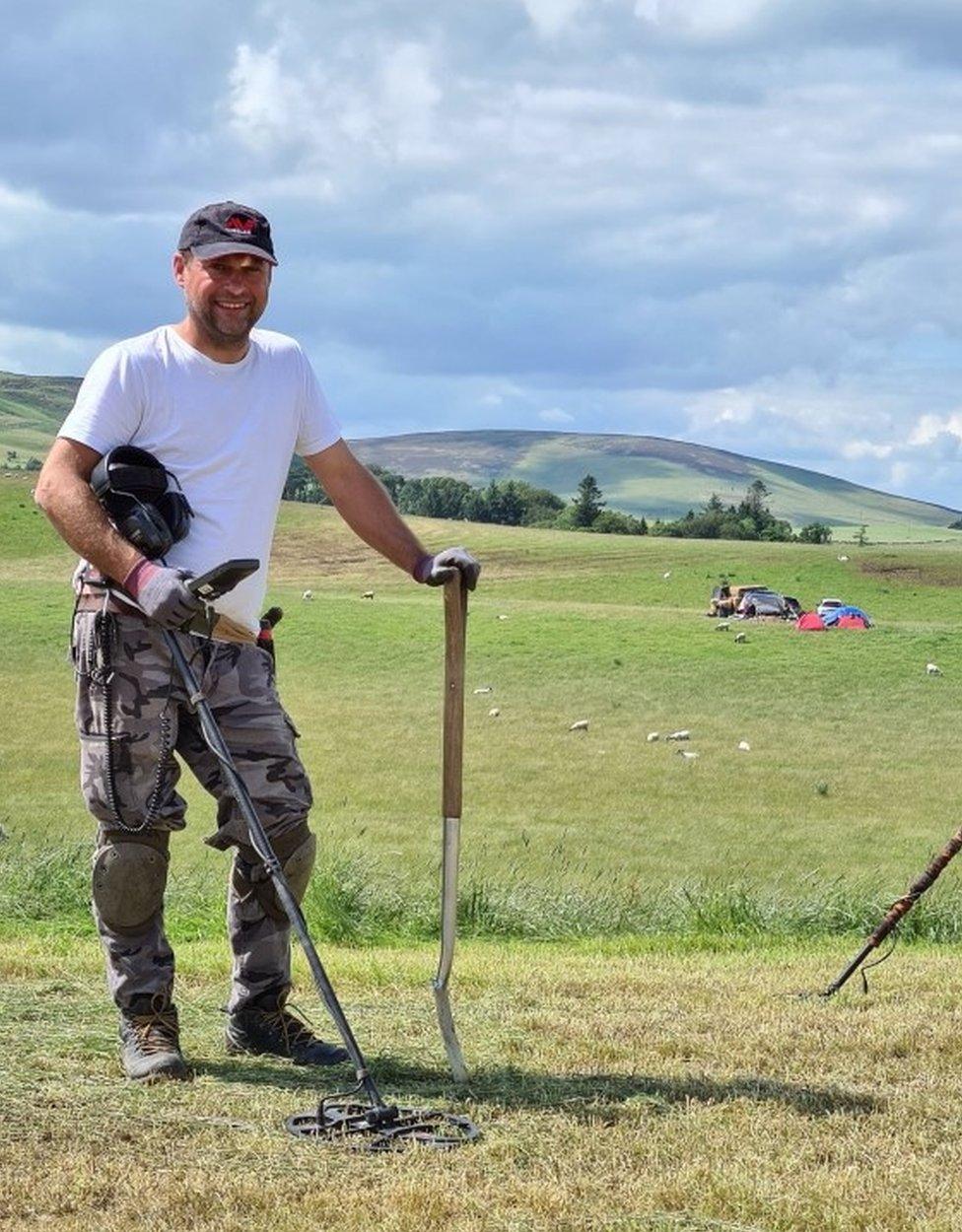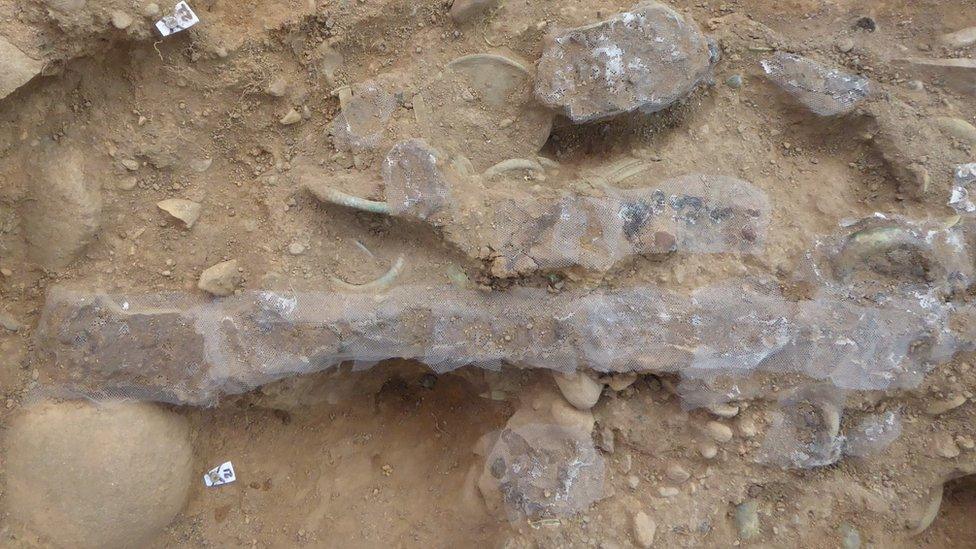Detectorist 'shaking with happiness' after Bronze Age find
- Published

Items believed to be pieces of the Bronze Age harness were also found
A metal detectorist was left "shaking with happiness" after discovering a hoard of Bronze Age artefacts in the Scottish Borders.
A complete horse harness and sword, external was uncovered by Mariusz Stepien at the site near Peebles in June.
Experts said the discovery was of "national significance".
The soil had preserved the leather and wood, allowing experts to trace the straps that connected the rings and buckles.
This allowed the experts to see for the first time how Bronze Age horse harnesses were assembled.

Mariusz Stepien discovered the hoard near Peebles in June

Mr Stepien was searching the field with friends when he found a bronze object buried half a metre underground.
He said: "I thought 'I've never seen anything like this before' and felt from the very beginning that this might be something spectacular and I've just discovered a big part of Scottish history.
"I was over the moon, actually shaking with happiness."
Mr Stepien and his friends camped in the field as archaeologists spent 22 days investigating the site.
He said: "Every day there were new objects coming out which changed the context of the find, every day we learned something new.
"I'm so pleased that the earth revealed to me something that was hidden for more than 3,000 years. I still can't believe it happened."

Archaeologists found a sword still in its scabbard during their excavation
Archaeologists found a sword still in its scabbard, decorated straps, buckles, rings, ornaments and chariot wheel axle caps.
There is also evidence of a decorative "rattle pendant" that would have hung from the harness, the first to be found in Scotland, and only the third in the UK.
Emily Freeman, head of the Crown Office's Treasure Trove Unit, said it was "a nationally-significant find".
She said: "So few Bronze Age hoards have been excavated in Scotland, it was an amazing opportunity for us to not only recover bronze artefacts, but organic material as well.
"There is still a lot of work to be done to assess the artefacts and understand why they were deposited."
The beginning of the Bronze Age in Britain can be put at about 2,000 BC.